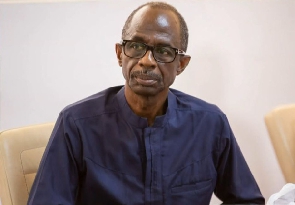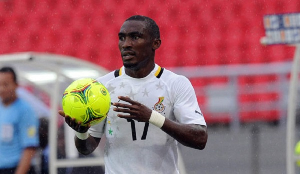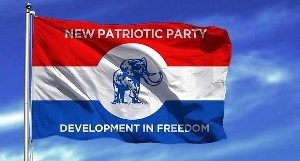Business News of Wednesday, 30 October 2013
Source: Williams Ofori Atta
Comment: The paradox of poverty in Africa
Poverty in Africa cannot be appropriately described in a less picturesque phrase than “paradox personified”. The level of deprivation and squalor are irreconcilable with the abundant natural resources at the disposal of the continent. Details of Africa’s share of the world natural resources are as follows: 20.4% of global land surface, 90% of cobalt, 50% of gold, 90% of platinum, 70% of tantalite, 98% of chromium, 64% of manganese and 33% of uranium, 60% of diamond, 51% of phosphate, 12% of proven oil reserves and 10% of natural gas.
A recent discovery of huge quantities of underground water is estimated to be about hundred times the amount of water found on the continent’s surface. Ironically, 300 million Africans do not have access to good drinking water. The above paradox presents more inexplicable questions than answers.
In 1960’s, when most of African countries gained independence, we exported food, but now more than a billion dollars worth of food aid is given to Africa every year by the western donors and international organizations, which invariably makes us net importers of food. The food import bill across the continent increased from $ 6.5 billion in 2002/2003 to $14.6 billion in 2007/2008, despite sitting on 60 percent of world’s yet-to-be cultivated arable lands. Food And Agriculture Organization (FAO) 2010 report, estimated Africa’s hungry people to be 25 percent of the world’s 925 million hungry people.
These startling and unfavourable statistics run contrary to huge agricultural potential in Africa that can make us net exporter of food. Most African governments seem to have given the responsibility of solving food insecurity problems to non-governmental organizations and international institutions like: Food and Agricultural Organization (FAO), Alliance for a Green Revolution in Africa (AGRA), World Food Programme (WFP), USAID, CARE international and Technoserve.
Africa’s homegrown solutions to agricultural problems seem to be mere window dressing of the core issues affecting the forward march of a sector that serve as a lifeline to about 70 percent people on the continent in terms of direct employment and 30 percent of sub-Saharan Africa’s gross domestic product (Bill & Melinda foundation). Studies have shown that gross domestic product (GDP) growth from agriculture is at least twice as effective in reducing poverty as non-agricultural GDP growth. Africa is the only continent yet to go full-circle with the green revolution.
Glaringly, the root cause of Africa’s sorry state of affairs is boldly written on the foreheads of its leaders-both past and present. Soon after independence, most African countries plunged into self-inflicted coup d’états that turned the clock of development backwards. Most of these coup d’états were engineered by individuals who were neck-deep in naked greed and selfishness.
From 1957 to 1992, it was estimated that out of one hundred and fifty (150) African leaders, only six (6) surrendered power voluntarily or constitutionally, the rest died in office, others were killed or deposed in military coup d’états. It is on record that in 1983, African governments spent $2.2 billion on weapons but $1.7 billion on medical care. Since 1975, twenty-eight countries have experienced a total of hundred military coups or coup attempts, and from 1980 to 2002, twenty-two countries engaged in conflicts in the last thirty years (Finance & Development, December 2006).
The above scenarios clearly paint a picture of leaders whose priority is to seek political power through foul or fair means with the view of plundering the continent’s resources but not to serve the people. No wonder Africa is the only continent in the world that had seen more households become poor in the last three decades. The expectations and the fanfare that greeted the New Partnership for Africa’s Development (NEPAD) as a development model for Africa is yet to be felt.
Contrary to their firm resolve to entrench democracy and good governance, two leaders, former president Olusengu Obasanjo of Nigeria and Abdoulaye Wade of Senegal who were part of the team that initiated NEPAD nearly turned their countries upside down, by attempting to tinker with their countries constitutions to lengthen their stay in office.
Achievements of the various sub-regional groupings like Economic Community of West Africa States (ECOWAS), Southern African Development Community (SADC), Common Market for Eastern and South Africa (COMESA), Arab Maghreb Union (AMU), Economic and Monetary Community Of Central Africa (CEMAC) are nothing to write home about. All these sub-regional groupings have “free movement of people and goods among member countries” in their various charters but hardly are they able to enforce this simple protocol among themselves. It is therefore not surprising that intra-Africa trade is one of the lowest compared to other continental groupings in the world. It is estimated that the volume of intra-Africa trade is only 10% compared to about 60% in European Union (EU).
Research has also proven that trade is the most effective tool in combating poverty compared to any other economic interventions. Most African countries are really missing out the opportunities trade has to offer. So far, the brightest spot on the continent happens to be South Africa whose economy is ranked among the best 30 well-performing economies in the world. South Africa’s strong showing in world economies is anchored by its full integration into the global trade. This is an area most African countries are missing out.
Until radical steps are taken to ensure that Africa’s 1% share of world’s trade and 2% of global gross domestic product (GDP) are reversed, no amount of aid can rescue this continent from its economic doldrums. In 2004 with a population of 751 million, the whole of sub-Saharan Africa made $ 415 billion which represents about 1% of the world Gross National Income (GNI) and less than the GNI of Netherlands (Free World Academy, 2005).
In 25 African countries, the amount of capital flight between 1970 and 1996 is estimated to be $ 193 billion compared to their $ 178 billion external debt (Boyce and Ndikuma, 2001). The above revelations indicate African countries were indirectly net creditors to the developed countries, yet poverty is the order of the day. According to UN human development report in 2010, 65% of world population who are under multi-dimensional poverty (extreme deprivation in education, wealth and standard of living) are found in sub-Saharan Africa and of the 42 least developed countries, 35 are from sub-Saharan Africa. All these gloomy statistics seem not to put our leaders into any ambitious mood to take visionary and far-reaching measures in order to ameliorate the unacceptable situation the continent finds itself.
If the worth of African leaders (past and present) as reported in the international circles are anything to go by, then Africa has a long way to go. According to Wikipedia, 2011, Muamar Gaddafi who ruled for 42 years until his demise was worth $200 billion, Hosni Mubarak who ruled Egypt for 30 years is worth between $40 billion and $70 billion. Sani Abacha who also ruled Nigeria for only 5 years was worth $ 4 billion and King Mswati III the only absolute monarch in Africa is worth $ 100 million. Forbes e-zine also puts the worth of Mobutu Seseko in the region of $1 to $5 billion, Theodore Obiang Nguema is worth $ 600 million and Daniel Arap Moi is also worth a billion dollars.
Ibrahim Babangida is alleged to have laundered $ 12 billion earned from Nigeria’s oil windfall during the 1992 Gulf war. Background check of these leaders showed that most of them did not have even have one-thousandth of their fortune prior to assumption of power. The obvious question is, where did their fortune come from? On the contrary, the total worth of all the 44 presidents of United States of American, from George Washington to Obama is about $2.7 billion (24/7 wall street, May 17, 2010).
The chairman of African Union Advisory Board on Anti-corruption (AU-ABC) in a meeting with board members in Arusha, Tanzania, on June 18th, 2012 is quoted to have said “on a yearly basis, Africa loses more than $148 billion due to rampant corruption, and perpetrators of this practice are taking the money from the continent to banks based in the developed world”. The above figure is equivalent to 25 percent of Africa’s GDP. If this economic hole is plugged, millions of Africans could be lifted out of poverty.
Professor Itse Sagay,a renowned constitutional lawyer in Nigeria, gave some shocking statistics about the emoluments of Nigeria government officials when he delivered a lecture to mark the 47th birthday celebration of Lagos state. According to him, a Nigerian senator in 2009 earned $ 1.7 million as salaries and allowances annually. A member of Nigerian house of representative also earned $ 1.45 million per annum. Meanwhile, their counterparts in the developed world, whose economies could afford such mouth-watering emoluments, rather pay far less. United States of America senator earns $174000 per annum which is almost ten times less than a Nigerian senator.
United Kingdom parliamentarian also earns £ 64000 per year. Even the president of USA, the largest economy in the world currently earns $ 400,000 per annum and UK prime Minister also earns £190,000 per annum. What a contrast! Sadly, whilst the developed world is seriously seeking ways to better the lives of their people, standard of living in Nigeria is worsening every second. The rate of poverty figures from Bureau of National Statistics of Nigeria indicate that, out of 163 million population 112 million live in abject poverty as of 2010, and it is believed that this figure might have increased in 2011. This profligate expenditure on emoluments of government officials is not only peculiar to Nigeria; similar situations exist in several African countries.
Even though poverty is on the decline worldwide, the rate of decline in Africa is not encouraging compared to other regions. In Africa, people living below the poverty line decreased to 40% in 2008 from 47% in 1990. This is nearly twice and thrice lower at 9% relative to Asia’s 15% and Latin America’s 24%. According to United Nations Economic Commission for Africa (UNECA), in order to meet the millennium Development goal of reducing poverty by half in 2015, we need to grow a minimum of 7% annually. However, 5.3% was the annual growth rate in Africa between 2001 and 2009.
In order to reverse this unfortunate trend, Africans must take the bull by the horn and demand purposeful leadership and good governance from our leaders. Among the root causes of the continent’s woes are sheer mismanagement, corruption, illiteracy, excessive reliance on foreign aid, lack of investment in research and development, low level of technology, non-existent value-addition policy for our raw materials as well as unacceptably low levels of intra-Africa trade.
The above problems are indeed reversible, if only we are committed in our resolve to turn things around for the better. It about time Africa lit its candle and stopped blaming darkness.
Williams Ofori Atta
Associate Economist (Association Of Certified Chartered Economists)
Contact: 0243376123, williamsoforiatta@gmail.com, facebook.com/manofori











